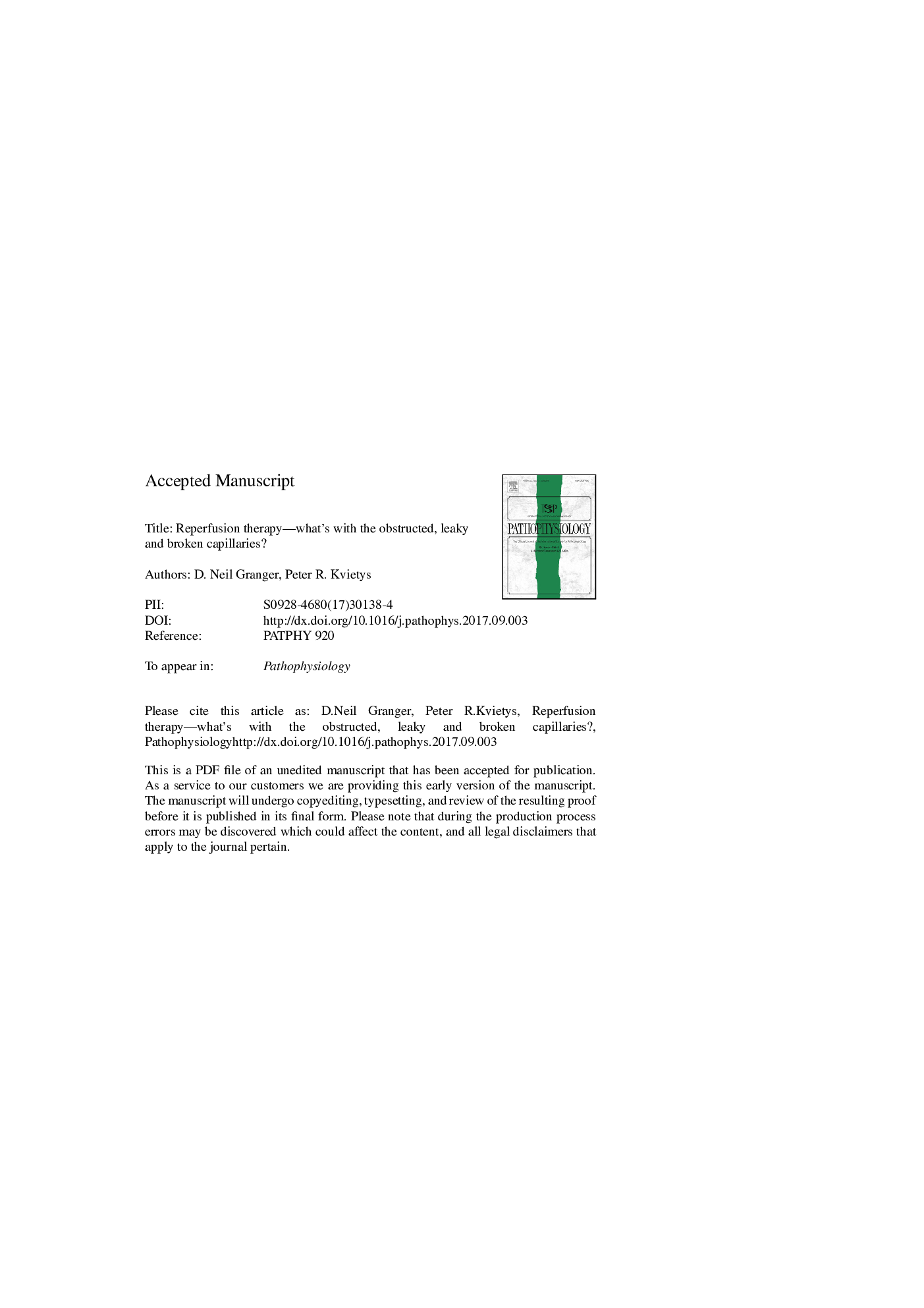| کد مقاله | کد نشریه | سال انتشار | مقاله انگلیسی | نسخه تمام متن |
|---|---|---|---|---|
| 8807948 | 1606690 | 2017 | 37 صفحه PDF | دانلود رایگان |
عنوان انگلیسی مقاله ISI
Reperfusion therapy-What's with the obstructed, leaky and broken capillaries?
دانلود مقاله + سفارش ترجمه
دانلود مقاله ISI انگلیسی
رایگان برای ایرانیان
کلمات کلیدی
موضوعات مرتبط
علوم پزشکی و سلامت
پزشکی و دندانپزشکی
آسیبشناسی و فناوری پزشکی
پیش نمایش صفحه اول مقاله

چکیده انگلیسی
Microvascular dysfunction is well established as an early and rate-determining factor in the injury response of tissues to ischemia and reperfusion (I/R). Severe endothelial cell dysfunction, which can develop without obvious morphological cell injury, is a major underlying cause of the microvascular abnormalities that accompany I/R. While I/R-induced microvascular dysfunction is manifested in different ways, two responses that have received much attention in both the experimental and clinical setting are impaired capillary perfusion (no-reflow) and endothelial barrier failure with a transition to hemorrhage. These responses are emerging as potentially important determinants of the severity of the tissue injury response, and there is growing clinical evidence that they are predictive of clinical outcome following reperfusion therapy. This review provides a summary of animal studies that have focused on the mechanisms that may underlie the genesis of no-reflow and hemorrhage following reperfusion of ischemic tissues, and addresses the clinical evidence that implicates these vascular events in the responses of the ischemic brain (stroke) and heart (myocardial infarction) to reperfusion therapy. Inasmuch as reactive oxygen species (ROS) and matrix metalloproteinases (MMP) are frequently invoked as triggers of the microvascular dysfunction elicited by I/R, the potential roles and sources of these mediators are also discussed. The available evidence in the literature justifies the increased interest in the development of no-reflow and hemorrhage in heart and brain following reperfusion therapy, and suggests that these vascular events may be predictive of poor clinical outcome and warrant the development of targeted treatment strategies.
ناشر
Database: Elsevier - ScienceDirect (ساینس دایرکت)
Journal: Pathophysiology - Volume 24, Issue 4, December 2017, Pages 213-228
Journal: Pathophysiology - Volume 24, Issue 4, December 2017, Pages 213-228
نویسندگان
D. Neil Granger, Peter R. Kvietys,